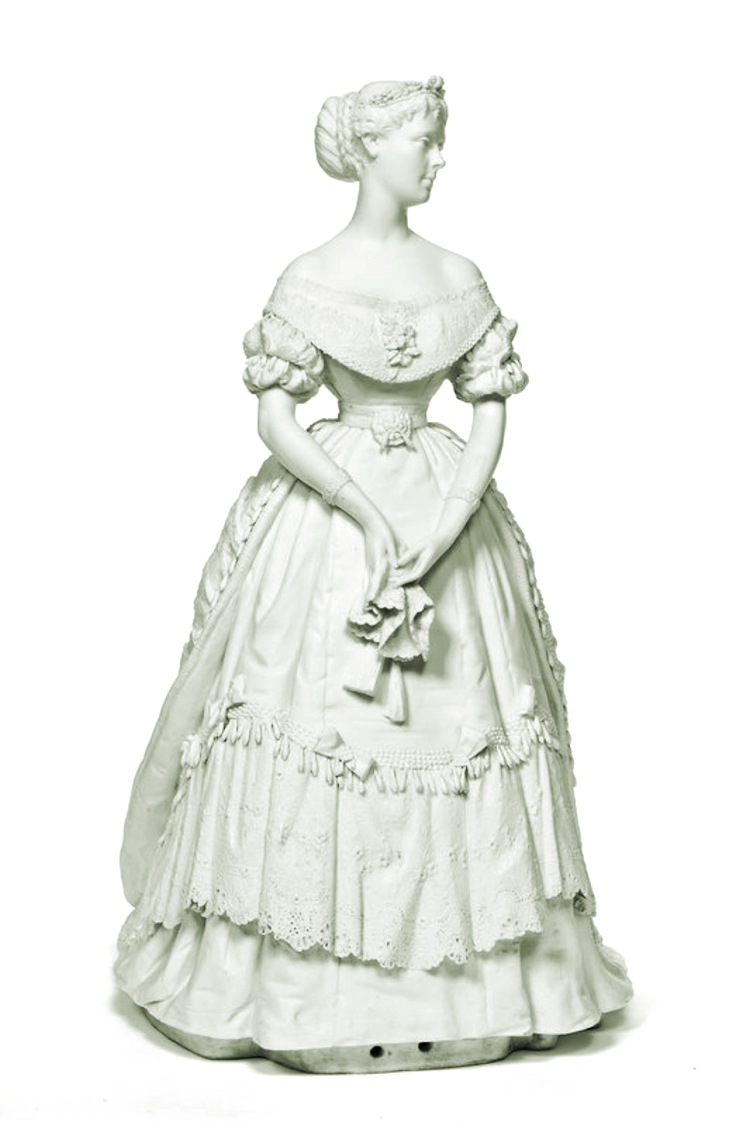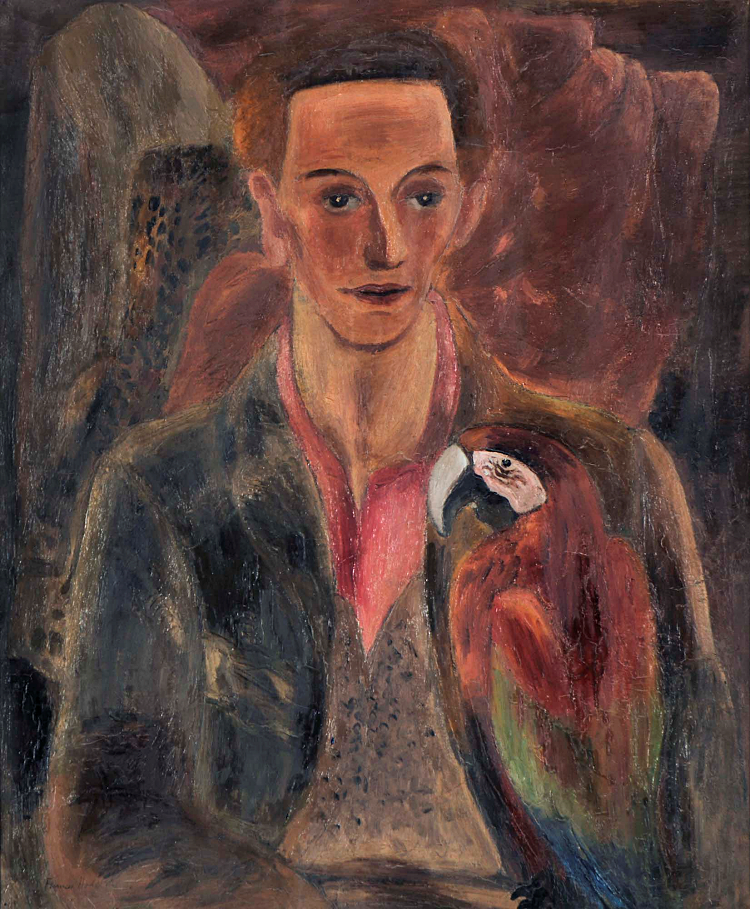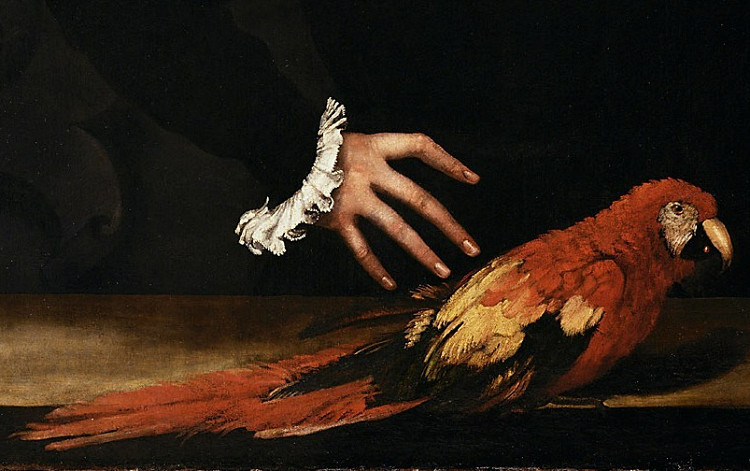 |
| Marie-Anne Walewska, comtesse (later duchesse) Colonna-Walewski, née di Ricci. (Three images.) |
A photosculpture is the representation of a figure or object in three dimensions made possible by taking a series of photos in the round and then using them as synchronized photo projections to create a sculpture.
 |
| «Portrait d'une aristocrate.» (Five images.) |

%20et%20son%20atelier%20Portrait%20d'une%20aristocrate,%20c.%201867.png)


The process was developed by French painter, sculptor, and photographer François Willème in 1859. Calling the method
sculpture photographique - photographic sculpture - he was awarded a French patent the following year, and an additional patent the year after that. (He also secured British and United States patents in 1864 and 1865, respectively.)
,%20c.%201865.png) |
| Matilde de Aguilera y Gamboa, madame de Fontagud, circa 1865. (Five images.) |




Willème presented his invention to the Société française de photographie in May of 1861, but it was only after two more years, with financial backing and the forming of a corporation, that he was able to open a large studio at 42 Boulevard de l’Étoile. Close by the Arc de Triomphe, the studio's dominating feature was a vast laboratory in the form of a glass rotunda, forty feet wide and thirty feet high, constructed of iron mullions with blue and white panes of glass.
 |
| Unknown lady. (Three images.) |
 |
| Unknown lady. (Three images.) |
The best society of the Second French Empire, members of the imperial family and the aristocracy, visited the gallery and were photographed for their sculptural portraits. Similar studios opened in London and New York. But after only a few years, and almost simultaneously with the prestigious and successful presentation of his photosculptures at the Exposition universelle d’art et d’industrie in Paris in 1867, the vogue for this work faded and business fell off drastically. Though the workshop continued in his absence for some time, Willème left Paris the following year and retired to his hometown of Sedan.
.png) |
| Unknown lady. (Two images.) |
*
 |
| The rotunda laboratory of Willème's atelier, 42 Boulevard de l’Étoile. (In 1864, the street name was changed to Avenue de Wagram, the name it still retains.) |
To create a photosculpture Willème would arrange the subject on a circular platform in his top-lit rotunda laboratory, surrounded by twenty-four cameras (one every fifteen degrees). He would then photograph his subject setting off all of the cameras simultaneously. The full set of photographic images then contained the data for a complete representation of his subject in three dimensions.
 |
| The projector and pantograph, circa 1865. |
Next he projected the individual photographs onto a screen. Using a device called a pantograph he then traced the outline of each image while the other end of the pantograph cut a thin sheet of wood into the same exact shape. The resulting wooden profiles were next assembled into a rough armature which would be filled in with clay or other suitable material, then finished and made ready to use, usually for a mold for casting.
 |
| An unfinished photosculpture, circa 1859. (Two images.) |
The client had a choice of the size of his photosculpture; by adjusting the distance from the projector, Willème could enlarge or decrease the cutting path of the pantograph, and therefore the size of the finished sculpture. The client also had a choice of material as well. While by far the most frequent material seen in surviving examples is biscuit porcelain, plaster and terra-cotta were also used and, apparently, bronze and alabaster portraits were sometimes produced. The price of a photosculpture, depending on the size and materials used, ranged from 270 to 500 Francs, and the turnaround time needed for creating a piece was an astonishing - if this is accurate - mere two to four days.
 |
| Self-portrait of the artist, circa 1865. |
Auguste François Willème (27 May 1830, Sedan - 31 January 1905, Roubaix), French painter, sculptor, and photographer. The son of a liquor retailer, as a young child he took drawing lessons at a local school. In his teen years he moved with his family to Paris, where he was enrolled at l’École des beaux-arts de Paris, to study painting under Henri Félix Emmanuel Philippoteaux, a specialist in history and portrait paintings. Willème also studied sculpture, making models for manufacturers of art bronzes, and by the early 1850s he was involved in photography. After his return to Sedan in 1868, he entered into a partnership with a local photographer, and gave drawing classes at Collège Turenne. In Sedan he also continued to make photosculptures. Sometime after 1885, he and his wife retired to Roubaix, near Lille, where died five years into the new century at the age of seventy-four.


,%20c.%201865.png)


.png)









%20et%20son%20atelier%20Portrait%20d'une%20aristocrate,%20c.%201867.png)
















































